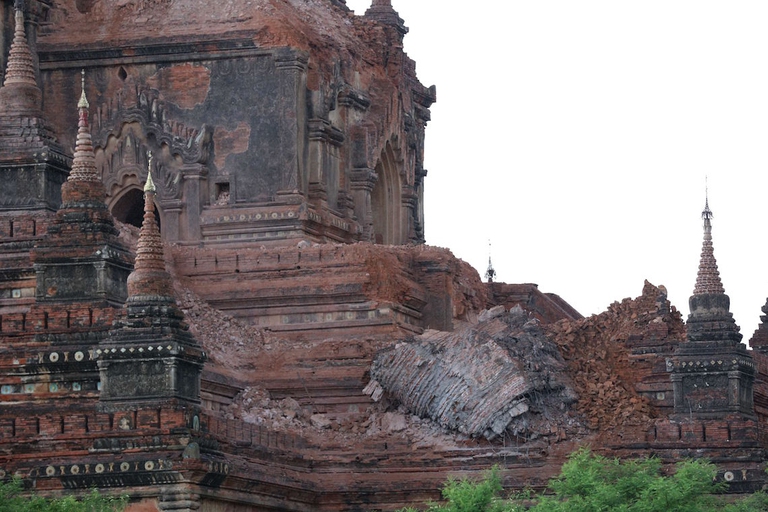
As per tradition after 12 years India held Mahakumbh, the world’s largest spiritual congregation that has been attracting pilgrims from across the globe.
A powerful earthquake in Myanmar struck on the 24th of August. It left three people dead, including two children, and hundreds of ancient temples damaged in the country’s old capital, Bagan, in the central part of the Southeast Asian country. Tremors from the 6.8 magnitude quake were felt across the region, including in Bangkok, Bangladesh and eastern India. “Two young girls
A powerful earthquake in Myanmar struck on the 24th of August. It left three people dead, including two children, and hundreds of ancient temples damaged in the country’s old capital, Bagan, in the central part of the Southeast Asian country. Tremors from the 6.8 magnitude quake were felt across the region, including in Bangkok, Bangladesh and eastern India.
“Two young girls died when a pagoda collapsed on a river bank,” Moe Thidar Win, deputy director of the disaster management team at the Myanmar Red Cross Society, told Reuters. “One man died in a Pakokku tobacco factory when the roof collapsed on him,” he added.
The old city of Bagan is home to more than 2,500 temples and pagodas dating back as far as the 10th century, spread over a 42 square kilometre plain. It is estimated that 187 temples and pagodas were damaged by the earthquake, and another 228 across the surrounding region of Mandalay, according to the Myanmar Times.
The city has bid to be recognised as a World Heritage Site, with the government applying to the 42nd session of UNESCO’s World Heritage Committee, due to be held in 2018. It is feared that the recent damage could jeopardise the site’s chances.
The magnitude of this episode was relatively high for Myanmar, which, however, isn’t new to earthquakes. Located to the east of the Sunda Trench, where the Indo-Australian and Eurasian tectonic plates meet, Myanmar is an earthquake hotspot.
The last deadly earthquake to hit the country was in 2012, when a 6.8 magnitude tremor struck the city of Mandalay killing 12 people and destroying a bridge and a goldmine. The most recent quake was felt in April this year, and it caused only infrastructural damages.
Siamo anche su WhatsApp. Segui il canale ufficiale LifeGate per restare aggiornata, aggiornato sulle ultime notizie e sulle nostre attività.
![]()
Quest'opera è distribuita con Licenza Creative Commons Attribuzione - Non commerciale - Non opere derivate 4.0 Internazionale.
As per tradition after 12 years India held Mahakumbh, the world’s largest spiritual congregation that has been attracting pilgrims from across the globe.
Workers in tea gardens of West Bengal, India, that produces Ctc tea for domestic consumption complain that they have been devoid of basic facilities while political parties make hollow promises during every elections which are never fulfilled.
India is in the middle of the elections, but sadly none of the politicians have uttered a word on man-animal conflict that has been devouring several lives every year.
Manipur, a state in north-east India, is still reeling under the tremors of violence that broke out last year devouring lives and paralyzing the economy.
The government of Tanzania is currently planning to evict more than 80.000 indigenous Maasai people from their ancenstral land
A new UNU-INWEH report on the global bottled water industry reveals the massive scale of this market and the lack of strict quality controls.
Isatou Ceesay founded a social enterprise that is helping to fight plastic pollution and empowering women and young people to gain economic independence.
In 2020, Mihela Hladin made a radical decision that many, in recent times, have probably considered. This is her story, with photos by Matt Audiffret.
The Brazilian government has started evicting illegal gold miners, responsible for the health emergency that has hit the Yanomami people.








